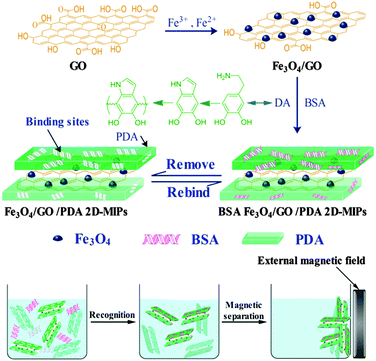Removal of a protein from solution requires specific recognition of the protein. This has been accomplished through the use of antibodies, epitopes, and functional moieties for years. Now there is a new tool available. It is called a molecularly imprinted polymer (MIP). MIPs have cavities in the polymer matrix that are the perfect fit for the target protein. They have all the right functional groups in all the right places, and this is due to the way they are made.
MIPs are produced when a polymerization reaction incorporates a template protein into its matrix. The template protein is the target molecule. It is the one that needs to be recognized and potentially separated from a solution. The polymerization scheme is designed to create a cross-linked structure that includes the template in its web. After polymerization is complete a surfactant is added and the templates fall out of the matrix. This leaves behind perfectly shaped cavities with high affinity and selectivity for the target protein.
In a paper published earlier this month in Physical Chemistry Chemical Physics, the MIP has been improved upon by the incorporation of iron-oxide nanoparticles into the polymer matrix. This allows the MIP-target-protein-complex to be magnetically separated from solution. The authors created a two dimensional MIP that specifically recognizes bovine serum albumin (BSA). The MIP was created by polymerization of polydopamine (PDA) on the surface of a graphene oxide (GO) sheet bound with iron oxide particles. The polymerization occurred in the presence of BSA template proteins, which created BSA-specific cavities in the polymer.
The BSA-Fe3O4/GO/PDA 2D-MIPs were demonstrated to have a high adsorption capacity for BSA, high recognition specificity for BSA, and the capacity for efficient reversible binding through five cycles. The MIPs were easily separated out of solution by the application of an external magnet.
Magnetic two-dimensional molecularly imprinted materials for the recognition and separation of proteins. Fangfang Chen, Weifeng Zhao, Jingjing Zhang and Jie Kong. Phys. Chem. Chem. Phys. 2015.
Related news:





